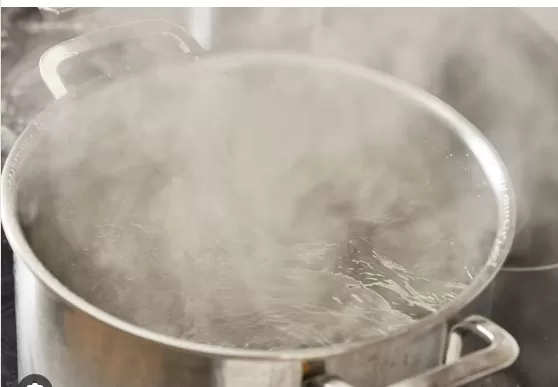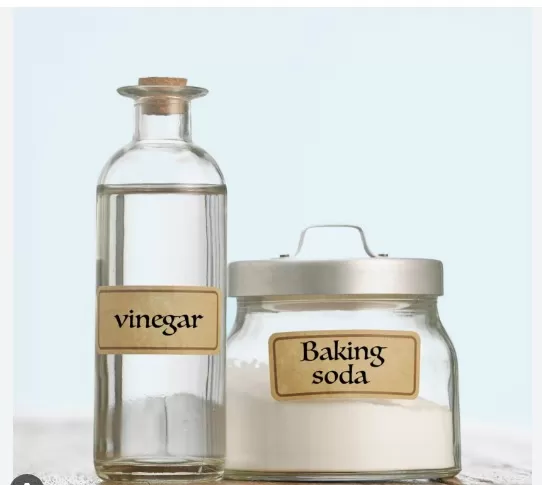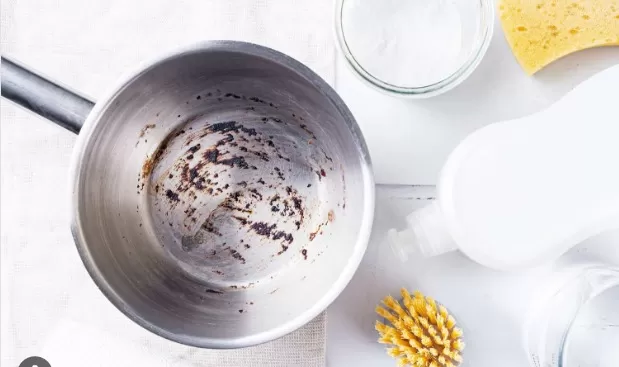Savior Tips: 5 Easy Ways to Rescue a Scorched Pot.If you find yourself doubting whether the burnt surfaces of your beloved cookware can ever be restored to their former glory, doubt no more!
Surprisingly, it is not only possible but also achievable with minimal effort and without the need for labor-intensive scouring. Here, you will discover seven straightforward methods to effectively clean a burnt pot, leaving it looking as good as new.
Discover 5 Effective Methods to Clean a Burnt Pot
When faced with the daunting task of cleaning a burnt pot, you may feel overwhelmed.
However, fear not! There are several do-it-yourself strategies that are not only straightforward but also highly effective. The best part is that you probably have all the necessary items right in your kitchen. Prepare to tackle your scorched cookware situation using boiling water, white vinegar, dishwasher detergent, baking soda, and even a humble dryer sheet. Allow us to guide you through these five tried-and-true methods for restoring your burnt pot to its former glory.
Method 1: Boiling Water

To tackle the burnt pot, start by embracing the power of boiling water.
Begin by filling the pot with a few inches of water, enough to cover the charred area. Place the pot on the stove and let the water come to a vigorous boil.
Allow it to bubble away for approximately 5 to 7 minutes.
Once the water has done its job, carefully remove the pot from the stove and set it aside to cool down.
It’s crucial to exercise caution and ensure your safety during this step. Once the pot has reached room temperature, gently pour out the water.
If you notice any large, now softened burnt bits, use a plastic spatula or a wooden spoon to scrape them into the garbage can.
With the preliminary cleaning out of the way, it’s time to bring out the baking soda.
Sprinkle approximately 2 tablespoons of baking soda evenly over the damp surface of the pot. The combination of baking soda paste and a little bit of elbow grease will work wonders in tackling the remaining stubborn stains.
Arm yourself with a cookware-safe sponge or scouring pad and start scrubbing away. You’ll be pleasantly surprised at how easily the black residue comes off, thanks to the potent and abrasive properties of the baking soda.
With method one completed, your burnt pot should be well on its way to a cleaner and shinier state.
Method 2: Vinegar
When the previous method falls short, it’s time to bring in the heavy hitter: white vinegar.
Prepare yourself for an effective cleaning session that combines the power of vinegar and heat. Begin by pouring equal parts water and white vinegar into the pot, ensuring that the charred area is fully submerged. Make sure you have enough liquid to cover the stains completely. Place the pot back on the stove and let the mixture come to a boil. Allow it to simmer for approximately 5 minutes.
The acidity of vinegar works wonders in loosening the stubborn stains left behind by burnt food.
As the mixture boils, you might even witness the blackened debris breaking away from the bottom and sides of the pot. It’s a satisfying sight!.
Once the boiling process is complete, follow the same steps as before.
Allow the pot to cool down while it soaks in the liquid. Once the mixture has reached room temperature, carefully pour it out.
Now, armed with a sponge that is safe for your cookware, proceed to scrub away any remaining burned residue. The combination of vinegar and heat should have significantly loosened the stains, making them easier to remove.
With method two, the power of vinegar has joined forces with heat to tackle those stubborn burnt stains.
You’re well on your way to restoring your pot to its former glory.
Method 3: Vinegar and Baking Soda

For the most stubborn cases, here’s an alternative method that combines the power of vinegar and baking soda.
Prepare yourself for an intense cleaning session that will tackle even the toughest burnt stains.
Start by filling the pot with undiluted vinegar, pouring enough to fully cover the charred area.
Place the pot on the stove and bring the vinegar to a boil. Once it reaches a rolling boil, reduce the heat slightly and let it simmer for a few minutes.
Remove the pot from the heat and allow the vinegar to cool down slightly.
Now it’s time to introduce the baking soda.
Add approximately 2 tablespoons of baking soda to the pot. As the baking soda combines with the vinegar, you’ll witness a fizzing reaction taking place.
To minimize potential messes, it’s advisable to perform this step in the sink. Once the fizzing subsides, carefully discard the liquid.
With the vinegar and baking soda mixture in place, grab a dish brush or a scouring pad that is suitable for the type of cookware you’re working with.
Begin scrubbing the pot, applying some elbow grease if necessary. If the stain persists, don’t hesitate to add a bit more baking soda to the mix.
Keep scrubbing until the stain is completely removed.
Method three is reserved for the most extreme cases, where the combination of vinegar and baking soda proves to be a formidable force against stubborn burnt stains.
Your pot is well on its way to regaining its pristine condition.
Method 4: Boiling Lemons
For a refreshing and effective approach to cleaning a burnt pot, turn to the power of lemons.
The citric acid present in lemons works wonders in breaking down caked-on debris without the strong odor associated with vinegar. Prepare to clean your burnt pot while infusing your kitchen with a pleasant citrus scent. Here’s how you can do it:.
Start by cutting approximately two lemons into quarters or thick slices.
Place the lemon pieces along the bottom of the pot, ensuring good coverage. Now, add enough water to the pot to completely cover the scorched area.
Place the pot on the stove and bring the water to a boil. As the lemon floats around, you’ll notice the burnt food particles loosening from the bottom of the pot.
Allow the water to boil for about 5 minutes.
Once the time has elapsed, carefully remove the pot from the heat. Let the pot soak in the lemon-infused water while it cools down to room temperature.
This soaking period will further aid in loosening the grime.
Once the water has reached room temperature, discard both the water and the lemon pieces.
With a soft sponge, lightly scrub off any remaining residue. The combination of the lemon’s natural cleaning properties and the scrubbing action will work together to restore your pot to its original state.
Method four introduces the refreshing and delightful scent of lemons into your cleaning routine, while effectively removing burnt stains.
Enjoy the clean and invigorating atmosphere in your kitchen.
Method 5: Dishwasher Detergent

When it comes to tackling burnt cookware, dishwasher detergent proves to be another effective solution.
Follow these steps to restore your pot using this method:.
Begin by adding one dishwasher tablet or 1 tablespoon of powdered dishwasher detergent, or alternatively, 1 teaspoon of liquid Dish Soap, into the pot.
Ensure that the detergent covers the burnt area evenly. Once added, fill the pot with piping-hot water from your faucet, leaving a few inches of water above the burnt residue.
Allow the pot to soak for a minimum of 30 minutes.
After the soaking period, gently scrape the bottom of the pot using a plastic spatula or a wooden spoon.
Test to see if the charred food bits easily lift off the surface. If they do, pour out the soapy water and proceed to scrub off any remaining residue.
However, if the charred bits are still stubbornly stuck, it’s time to kick things up a notch.
Simmer the water-and-detergent mixture on the stove for approximately 10 minutes.
The heat will help to further loosen the burnt food particles, making them easier to remove. Once the simmering is complete, carefully remove the pot from the heat and let it soak while it cools down.
After the pot has reached a manageable temperature, discard the liquid and proceed to scrub off any remaining gunk.
It’s important to note that the success of this method can be influenced by the type of dishwasher detergent used. Choose a detergent that suits your cookware and cleaning needs.
Method five introduces the power of dishwasher detergent to effectively tackle burnt stains.
Enjoy the satisfaction of seeing your pot restored to its original cleanliness.
*The information is for reference only.